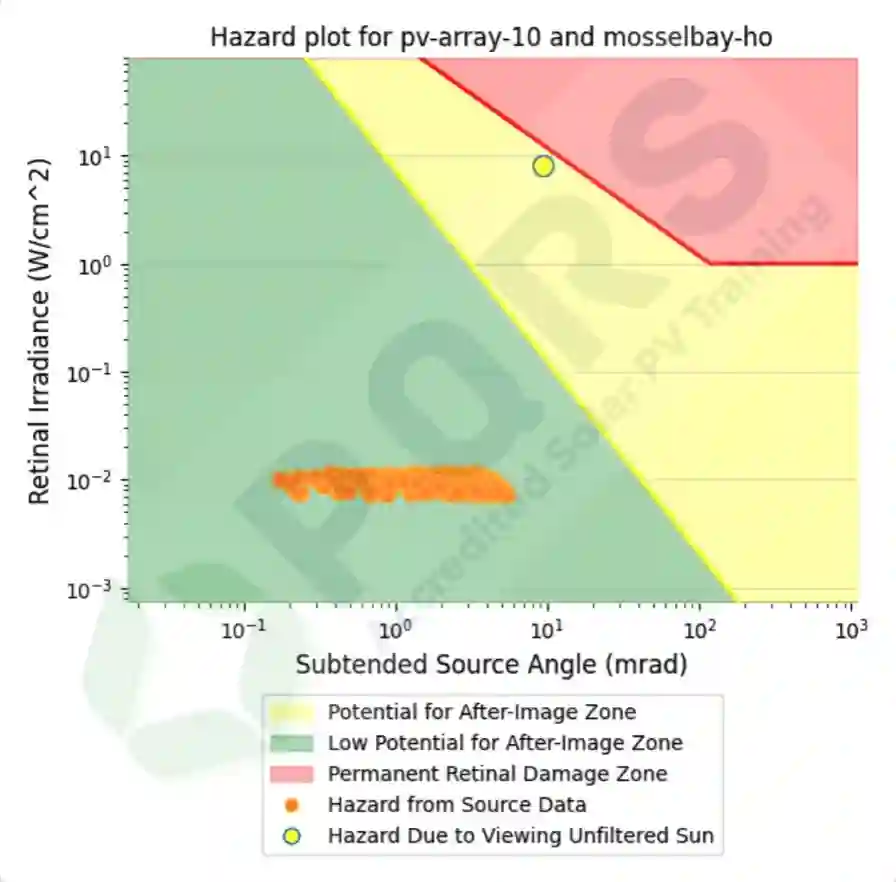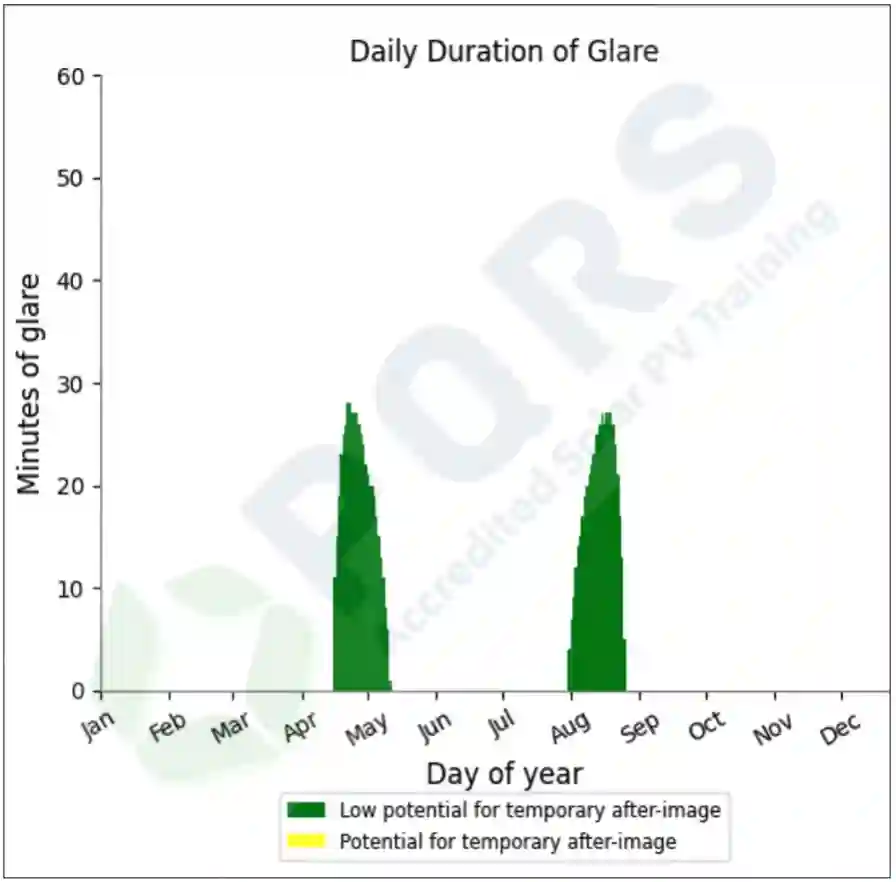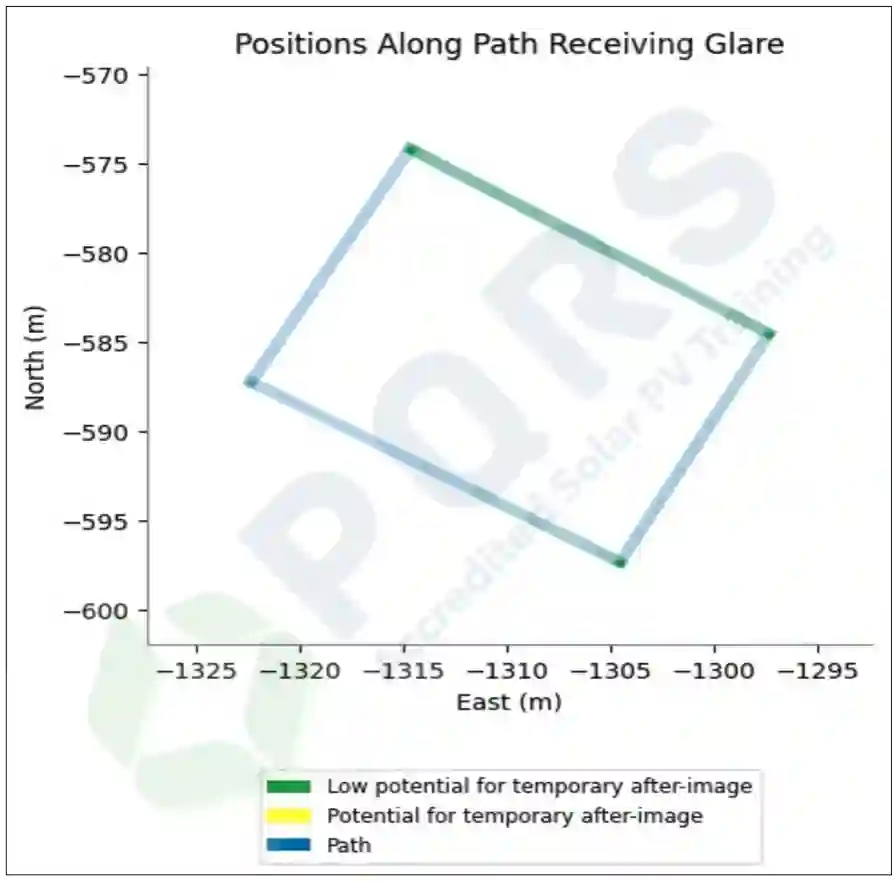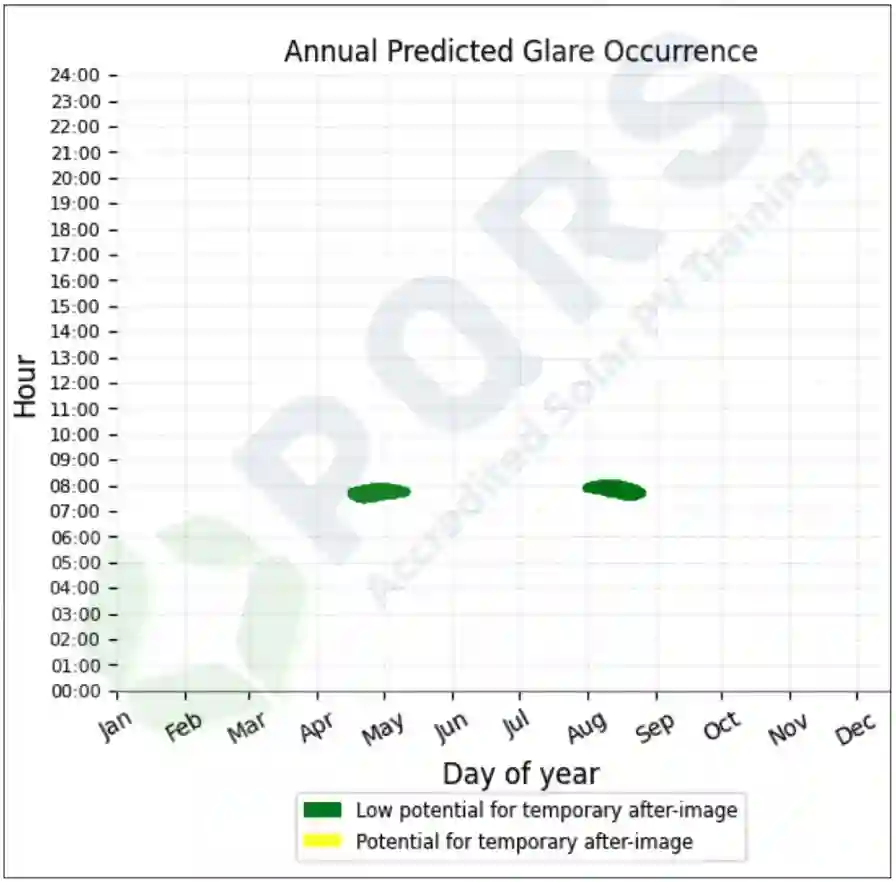Glint and glare reports are largely unknown but essential in the planning and operation of solar (PV) systems when the system is within a 3km vicinity of a runway or airport.
These reports evaluate the potential for solar panels to reflect sunlight in a way that could impair the safety and efficiency of aviation activities. Their importance stems from the need to mitigate risks associated with solar glare, which can temporarily impair a pilots’ vision, interfere with aircraft instruments, and pose safety hazards in the vicinity of runways or traffic control towers at airports.
Yellow and Green After Effects
As an example, when we are exposed to glare maybe while driving behind someone in traffic and we are caught in the glare of the vehicle in front of us by surprise this could potentially leave a yellow or a green imprint in our vision or in the back of our vision as a result of the glare. Glint and glare reports aim to prove that Yellow and Green glare won’t be a problem for pilots during the approach and departure of aircraft or air traffic control towers at airports.

The primary purpose of glint and glare assessments is to ensure that solar PV installations do not produce reflections or bright light that can compromise aviation safety. In South Africa, with its reliance on solar energy and the abundance of high solar irradiance, the number of photovoltaic arrays is increasing rapidly.
The South African Civil Aviation Authority (SACAA), require comprehensive assessments to identify and mitigate glare-related risks before approving solar projects. South Africa follows the US FAA (Federal Aviation Administration) rules.
Glint, Glare and Albedo
Glint refers to the brief, intense flashes of sunlight that can occur when sunlight is reflected directly into the cockpit or the flight path, whereas glare refers to a sustained or diffuse brightness that can impair visibility. Both phenomena can distract or temporarily blind pilots, especially during critical phases of flight such as take-off and landing. Therefore, accurate identification of potential glare sources is crucial for maintaining airport safety standards and preventing accidents. The reflection is known as or referred to as, the Albedo. Just as a matter of interest, the albedo generated by a body of water has a glare that is more intense than that generated by a solar PV farm typically due to the textured glass used with most solar PV modules.



The process of generating a glint and glare report involves detailed optical modelling of the proposed solar PV installation’s orientation, tilt, and location relative to flight paths, airports, and populated areas. These analyses predict whether reflections will exceed safety thresholds established by aviation safety standards. If the assessments identify potential issues, project developers are required to implement mitigation measures. These measures may include adjusting panel angles, using glare-reducing coatings, or designing landscaping buffers to redirect reflections away from critical flight zones.
In the South African context, these reports are mandated by regulatory frameworks to harmonize renewable energy development with aviation safety. Banks, investors, and government agencies also rely on these assessments for due diligence, reducing financial risks associated with project delays or safety issues.
By accurately assessing and mitigating potential sunlight reflections from solar PV systems, these reports uphold safety, promote responsible development, and ensure that the transition to cleaner energy sources proceeds smoothly without compromising crucial flight operations.
For your Glint and Glare Requirements, Contact Us, we would be happy to assist.
